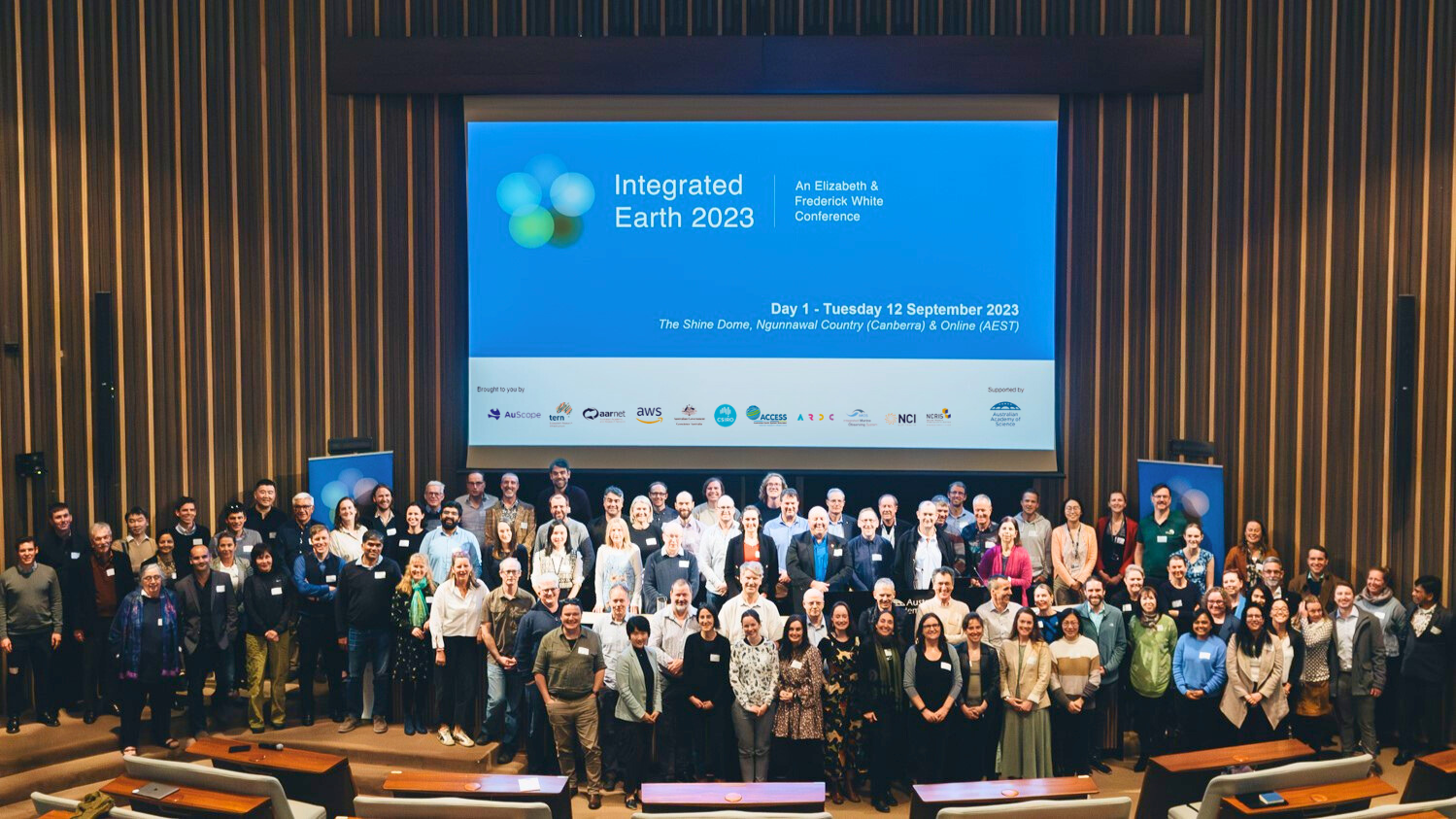Members of the earth science community from all over Australia came to Canberra in September to take part in a unique gathering – the Integrated Earth 2023 conference. Supported by the Australian Academy of Science as an Elizabeth and Frederick White Conference, Integrated Earth brought together researchers from the five broad spheres of Earth science: the geosphere, cryosphere, hydrosphere, biosphere and atmosphere.
Overlapping across their research topics, methods and computing and data needs, the five spheres used Integrated Earth to build a foundation of collaboration for the next generation of Australian Earth research. Organised by AuScope, TERN, NCI, ACCESS-NRI, ARDC and IMOS – a partnership of infrastructure facilities funded by the Australian Government’s National Collaborative Research Infrastructure Strategy (NCRIS) – Integrated Earth created an environment to discuss the future directions of Earth science in Australia.
The Earth’s oceans, ice, life forms, minerals and air are irrevocably intertwined. The scientific domains to understand these systems must, by necessity, be similarly interconnected. Climate simulations incorporating the complex processes take place far above and deep below the surface of the Earth. Understandings of mineral deposits incorporate plant growth, ancient climate patterns and surface weathering processes.
To discuss these topics and many more, a mix of senior scientists and Early Career Researchers (ECR) came together with the infrastructure facilities for two days of interactive scientific talks and discussions. To kick things off, Dr Dalia Kirschbaum from NASA presented online about the United States’ wealth of data collection and collaborative science agencies all contributing to ambitious simulations of extreme weather and Earth systems. Next, Jim Walker from the University of Queensland added another dimension to the discussions, by adding an Indigenous perspective to inform and support integrated earth science.
Conference recordings
Integrated Earth Playlist
The first day featured presentations and moderated discussions about each sphere in turn. Discipline leaders set the tone, followed by ECRs discussing upcoming priorities, and a panel of experts were on hand to answer questions from attendees in the audience. These discussions carried through to the end of the first day, punctuated by breaks featuring as much delicious food as there were enthusiastic conversations. Attendees noted the apparent overlap in themes across the spheres. Disciplines are all facing similar challenges around data volumes and data sharing, and see the potential to come from more collaboration with Earth scientists from neighbouring disciplines.
At the conclusion of the Day 1 discussions, attendees kept up the collaboration during an Indigenous-themed dinner. The good food and plentiful conversations kept the attendees on site even past the designated finishing time. In a sign of things to come the next day, attendees were more than willing to take advantage of the opportunity to network across disciplinary boundaries.
Day 2 took the attendees into more extensive, cross-disciplinary discussions about their data needs and science ambitions. Simon Hodson from CODATA (the Committee on Data of the International Science Council) shared an ambitious vision for international data integration across the sciences, with significant efforts underway for data standardisation, sharing and collaboration. Next, Cassandra Price from CSIRO took attendees through Indigenous data sovereignty as a way to integrate and protect Indigenous knowledges and science. These two presentations outlined the critical importance of thinking broadly about the kinds of data we value and the ways we decide to use them.
Perspectives from the Australian Academy of Science about data in science and an overview of Australian data infrastructures from the six organising facilities set the scene for an afternoon of cross-sphere thinking. In small groups, attendees discussed the opportunities and priorities for increased scientific collaboration across the spheres. Key outcomes included calls for ambitious, big-vision projects to catalyse innovation across the spheres and demonstrate impact to government, and the need for further deep scientific discussions about the practicalities of improved data and science sharing.
The organising facilities are preparing a Discussion Paper to formalise the conference outcomes and guide the next steps of integrated Australian earth science. The Integrated Earth conference highlighted the strengths and the existing diversity of expertise contained within the Earth science community. This event will serve as a starting point to catalyse greater knowledge exchange, skills development and science evolution in Australia for years to come.
- Visit the conference website
- Download the conference program
- Thanks to Adam Huttner-Coros for contributing this article.







